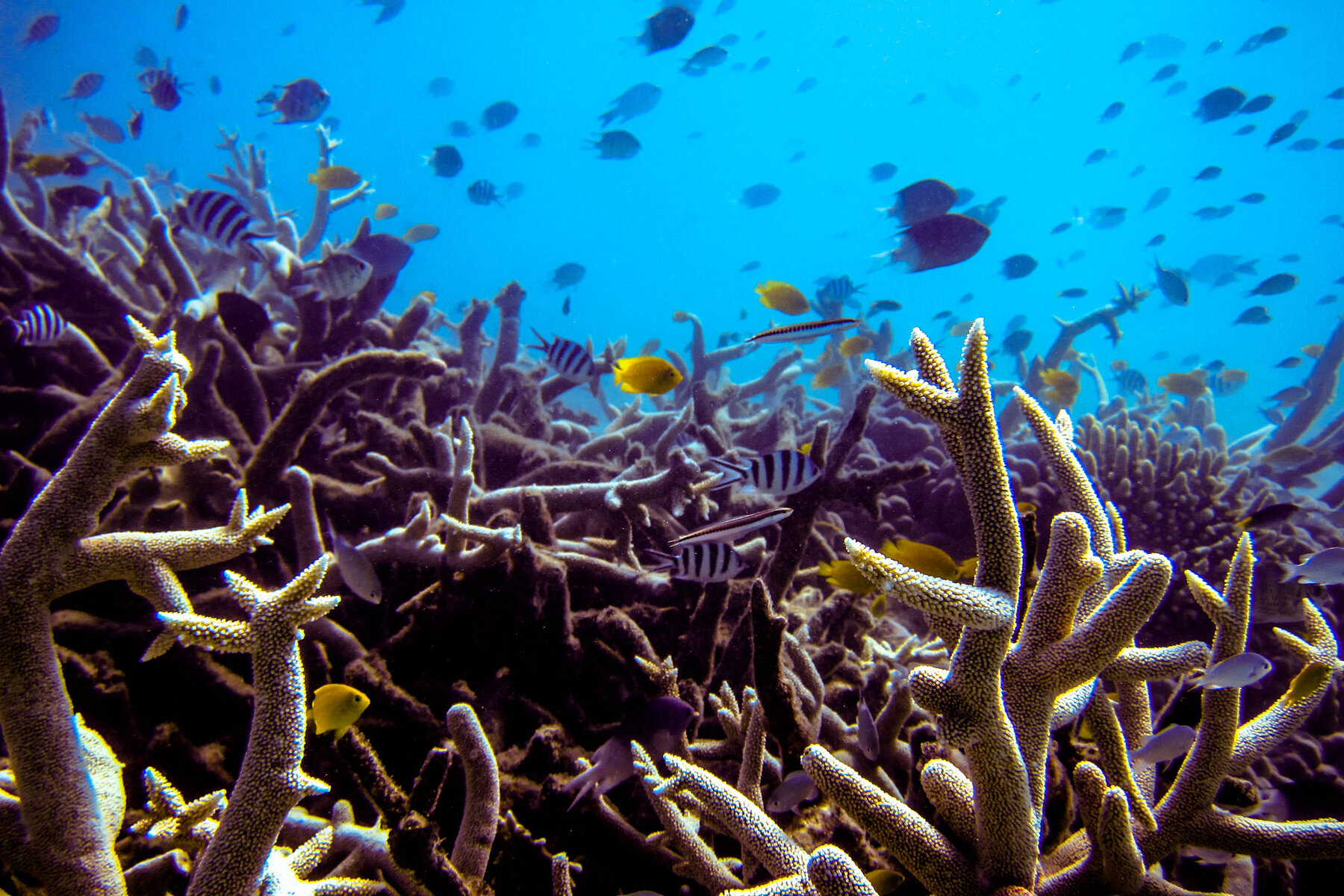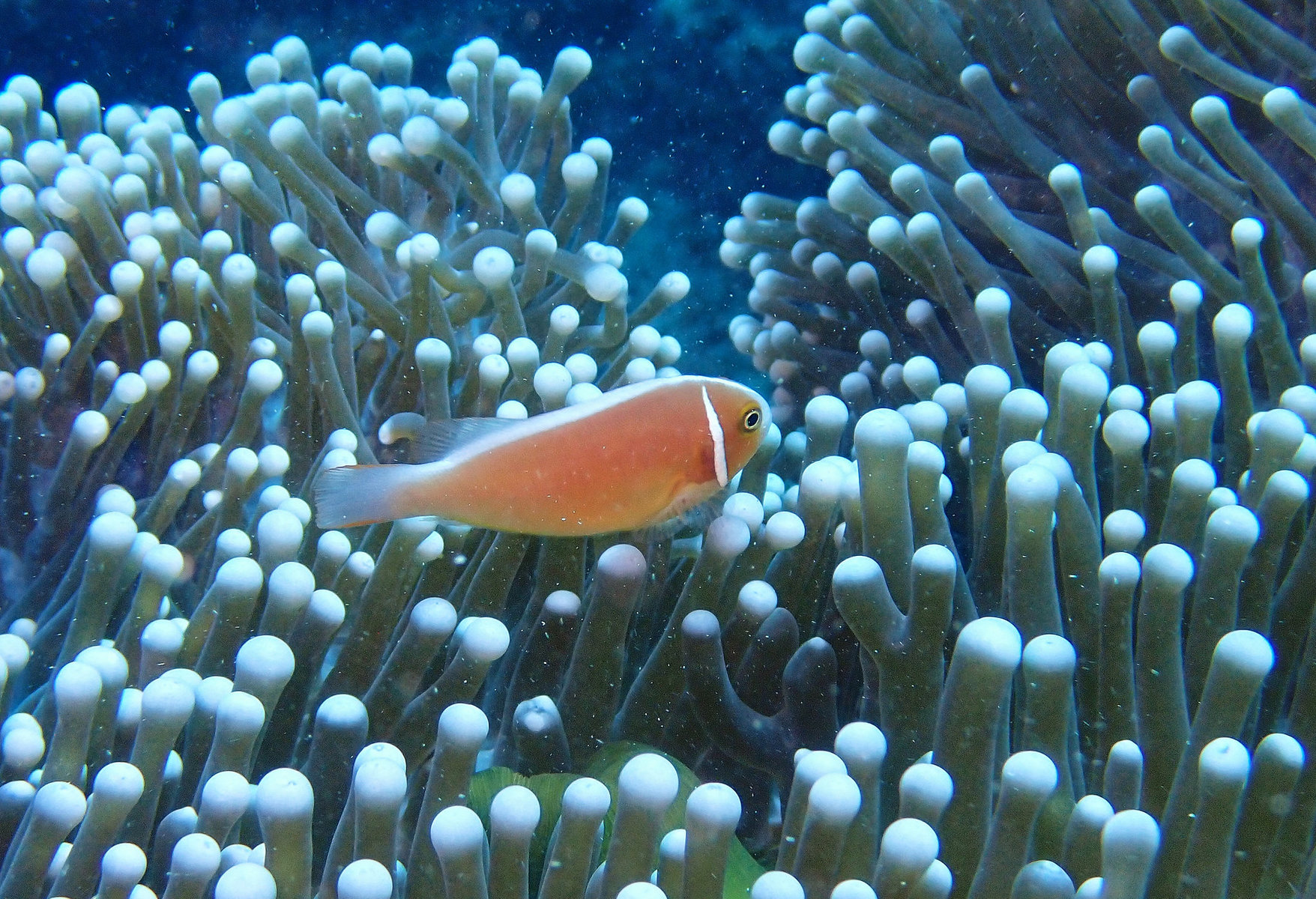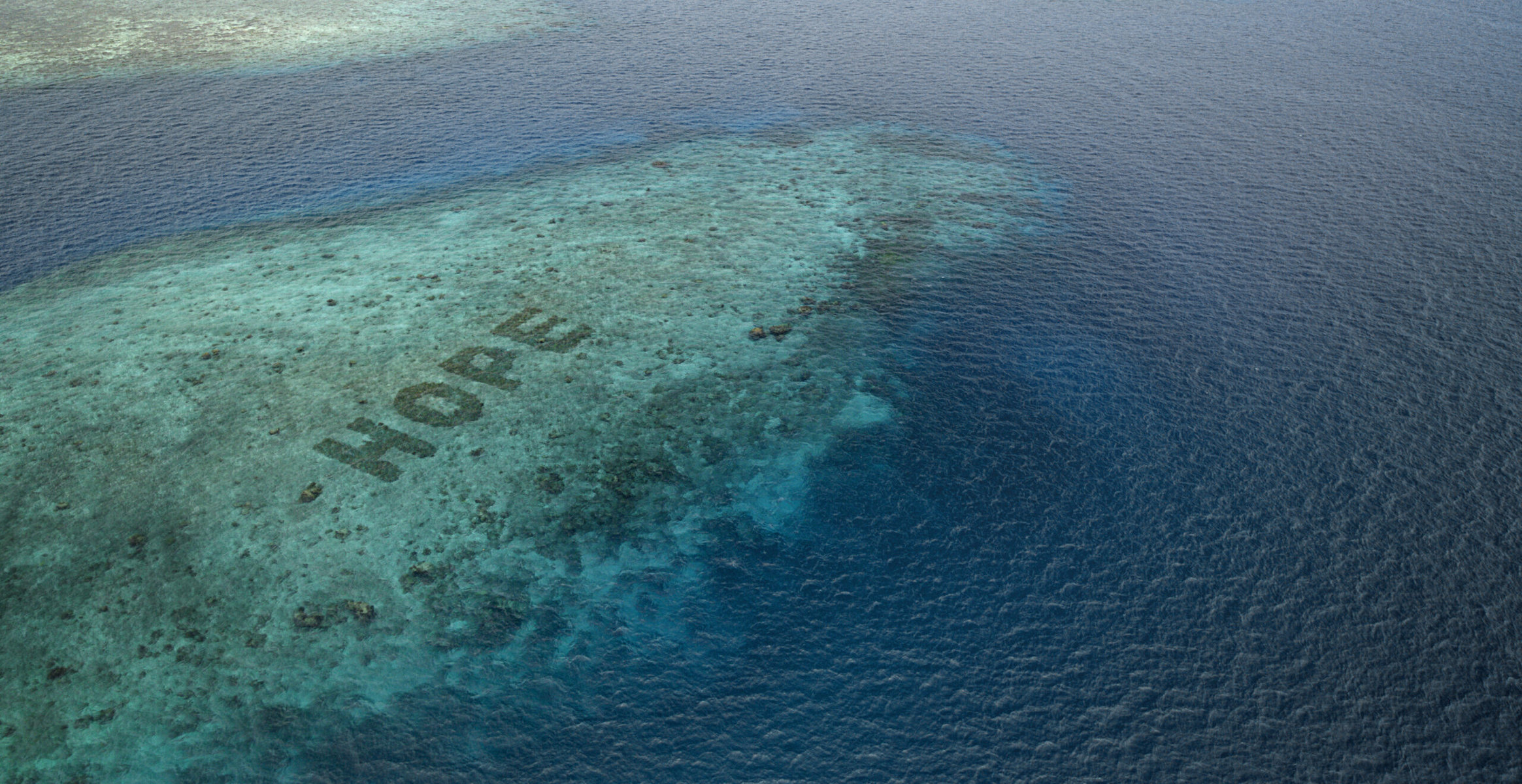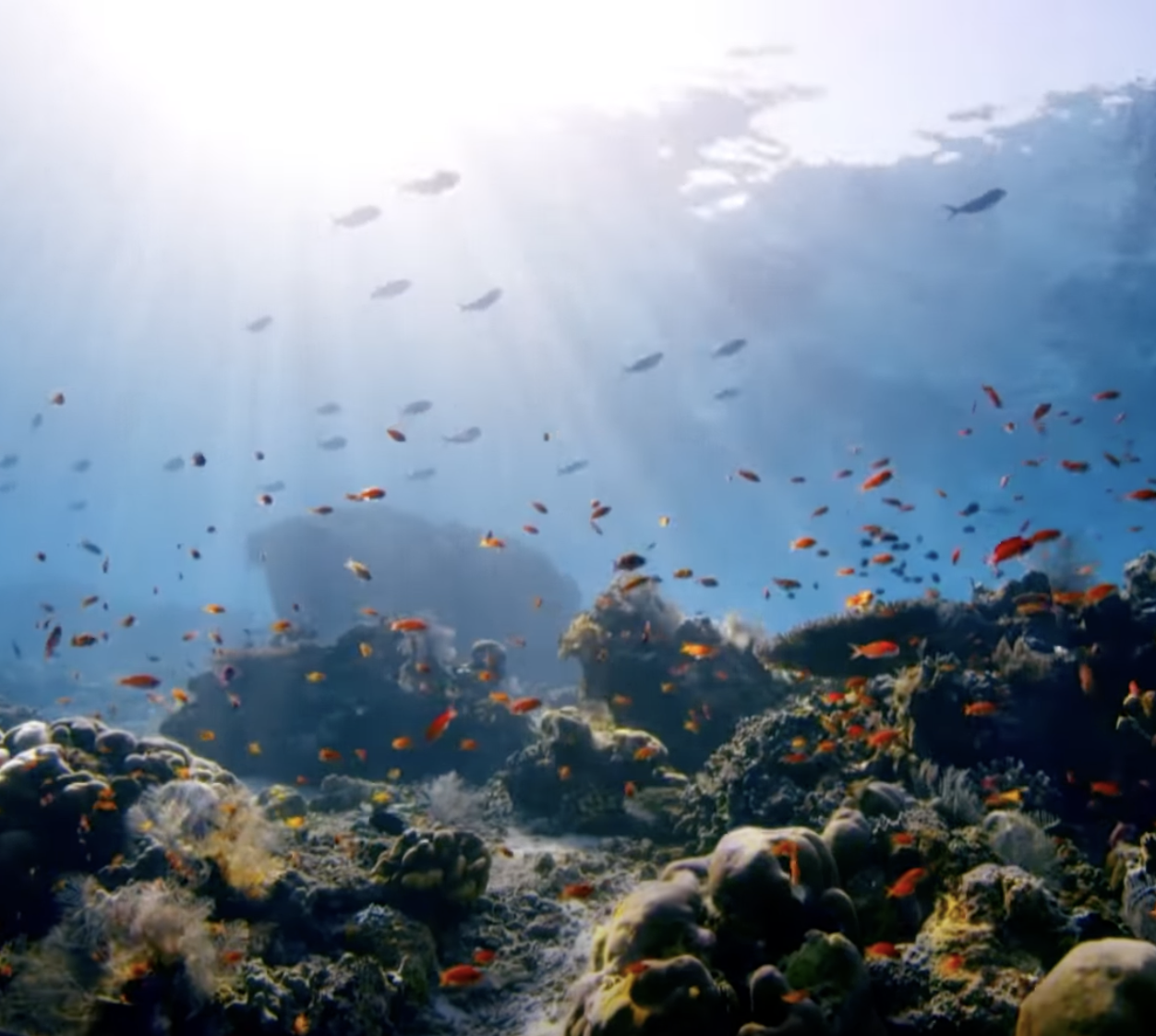This story is part two of a two-part series. Read part one here.
You might have heard that the Great Barrier Reef is the world’s largest collection of coral reefs, a natural wonder stretching over 1,400 miles off Australia’s Queensland coast, hosting 400 types of coral and thousands of fish species. Since 1981, it has been recognized as a UNESCO World Heritage Site, and most of its ecosystem is protected.
But you might not know that it is also the stage for daily underwater concerts. Take a dive or listen to marine biologist Steven Simpson’s recordings and you hear grunt fish grunt, shrimps snap, damselfish chirp, clownfish grumble, sperm whales click and humpback whales sing their soprano mating songs that are audible over tens of miles.
“When I tell them fish have ears, people look at me like I’m mad,” says University of Bristol professor Steve Simpson. He and his colleagues were initially ridiculed by their peers when they started eavesdropping on fish communication nearly 20 years ago, but their sound experiments have been recreated successfully so many times that they are established science now. Recent research has revealed that dolphins call each other by name, turtle embryos coordinate their birth with one another from inside their eggs, and a coral reef is also a symphony that attracts coral larvae. Much like doctors use stethoscopes to assess the healthy heartbeat of a patient, the interdisciplinary science of ecoacoustics, which investigates natural sounds and their relationship with the environment, has emerged as an effective solution not only for monitoring the health of marine ecosystems, but also for restoring them.

The world has lost half its coral reefs in the last 30 years, and researchers are racing against the clock to support these invaluable habitats in their battle against warming waters, pollution, overfishing and acidity. “Scientists predict that, if we continue along the current global warming trajectory, coral reefs will entirely disappear from the oceans within 30 years, threatening the livelihoods of the more than one billion people who depend on them for food, medicine, and coastal protection,“ the late University of British Columbia professor Karen Bakker writes in her fascinating book The Sounds of Life. “The disappearance of corals is a death knell for many other species.”
As the coral reefs disappear, so too does their chorus. “When a reef diminishes, the diversity and complexity of the sound goes missing, too,” Simpson says. “It becomes an acoustic desert. You can really hear the difference between an overfished reef and a marine protected area. You can hear the biodiversity.”
When Steven Simpson attended the UN climate conference COP27 in Sharm el-Sheikh in 2022, he and his team wanted to demonstrate to the attendees the difference in biodiversity between protected and unprotected marine areas. By coincidence, they happened upon a sound technician who had all the necessary gear because he had just live-streamed a Red Hot Chili Peppers concert from the Egyptian pyramids. “We dropped a hydrophone out on a buoy and beamed the sound back to the conference, where the director general of the United Nations and all the politicians and experts were able to listen to the life-streaming of coral reef sounds,” Simpson says. “It was an immersive, emotional experience. Sound moves us on a dance floor, in a movie, and to be listening to a live coral reef is something very powerful.”
It moves fish, too. Fish and crustaceans use all their senses to find suitable habitat, including audio. And just like a good soundtrack might attract humans to a movie or concert, the sounds of a vibrant reef attract fish and coral. When Simpson played the recording of healthy reef sounds over compromised reefs in Australia, he found that double as many fish settled into these reefs. Simpson compares his underwater DJ job “to a real estate agent who sings the praises of a new housing development long before it’s an exciting place to live.”
For a study recently published in the Royal Society Open Science journal, researchers set up an underwater speaker broadcasting the bustling sounds of a thriving reef on a degraded reef off the US Virgin Islands in the Caribbean. The experiment confirmed that the underwater concert attracts up to seven times more coral larvae and fish than a decimated reef without acoustic enrichment.
Coral larvae are often microscopically small and float in the ocean before they settle permanently on a reef. They don’t have brains or ears, but studies have discovered they are sound-sensitive, probably through their tiny hairs (epidermal cilia) that detect vibrations.
Crushed by negative news?
Sign up for the Reasons to be Cheerful newsletter.Seventy years ago, legendary oceanographer Jacques Cousteau described the underwater world as “the silent world,” but we now know that is far from the truth. Not only is there sound down there, but that sound is complex, rich and varied over time. Simpson distinguishes between “the morning chorus when the daytime fish emerge and the dusk chorus when the nocturnal fish come out; you hear an increase in the breeding season and during the new moon when it’s darker. There is a temporal structure to the soundscape.”
Technology has accelerated both the number of recordings and the speed of their evaluation. Steve Simpson remembers “building a Walkman in a barrel with a synchronized swimming pool speaker that we hung over the reef with the car battery in the 1990s. We pretty much managed to miss all the output of the fish that year.” But technology improved after 2000. That’s when Simpson, his graduate student Tim Gordon and other pioneering marine biologists like Robert McCauley, a professor at Curtin University in Perth, Australia, found that fish, clams, lobsters, even corals and their microscopically small larvae all use sound to find their way to healthy habitat.

“Animals are using a hierarchy of senses as they try to resolve complex challenges in their environment,” Simpson explains. “We realize that the fish at sea are doing much what we would do if we were moving to a new city: we’d perhaps get on the internet and do some research into different suburbs that we might want to live in. Fish might use sounds to find the coast or a healthy reef, then the smell of mangroves or seagrasses, and then once they get close, they use vision.”
Simpson compares it to trying to find a friend that you lost in a crowded music festival. “You might wander around the crowd for hours. But if you know they wear a yellow t-shirt and you lost them at the hot dog stand next to the jazz stage, you can listen for the jazz, then smell the hot dogs and then look for the yellow t-shirt. Except for fish, it’s life or death whether they make the right decision where to settle.” Fish, Simpson quips, are “much smarter than people at festivals.”
In the years 2015 and 2016, Simpson’s team was working in the pristine marine protected areas of the Northern Great Barrier Reef when a catastrophe hit. A heat wave bleached out the reefs so fast Netflix made a blockbuster documentary film about it, Chasing Coral.
“We watched the reef die in front of us,” Simpson remembers. “That was a real wake-up call that no matter how much effort we are putting into local marine protected areas, we have to also protect them against global impacts. We started using what we had learned to see if any of this could serve as tools to help reefs recover.”
The Great Barrier Reef is a prominent example where scientists are able to monitor biodiversity through sound. “We are able to identify individual species that make sounds,” Simpson says. “We can hear who’s living on a reef and who is active.”
Playing healthy reef sounds helped attract fish and coral to repopulate the reefs. “We’re almost back singing at full volume with all the right characters in the orchestra,” Simpson says. “That then becomes a self-fulfilling prophecy in terms of that restoration because that reef is calling out literally to the next generation of fish, crabs, corals, and larvae that are able to find their way onto that reef and replenish it.” Simpson adds that even in the bleached parts of the reef, some corals grew back.
Simpson has worked all over the planet, not only in Australia but also in the Caribbean, the Red Sea and Asia, including on the SHEBA Hope Reef in Indonesia, the largest coral reef restoration project in the world, which attempts to restore more than 185,000 square meters of reef by 2029. The scientists planted corals to spell their message, HOPE, in giant letters across the once-degraded habitat.
Despite the rapid reef loss around the world, Simpson calls himself “an ocean optimist.” “It’s the resilience of nature that gives me hope,” he says. He views the emerging science of ecoacoustics as a pathway to innovative solutions. To him, this is less a story about the loss of habitat than about “the value of acoustic enrichment.”

Working in tandem with other marine biologists who replenish coral through breeding and replanting them, scientists are attempting to determine which methods of conservation and restoration are the most effective. “We have the opportunity to quite rapidly rebuild small areas of reef,” Simpson says, “and offer acoustic enrichment to the areas that have been hit the worst.”
Wherever he dives, he realizes, “We are changing the soundtrack of the ocean through overfishing, climate change and poor environmental protection.” He has his work cut out for him: “It’s our gift to change the soundtrack of the ocean in this generation, but to change it for the better, not the worse.”
The new insights call for noise protection. “Noise pollution is also a problem when we run the experiments,” Simpson realized. “Which made us investigate, what’s the noise doing to the fish down there?”
He found that motorboat noise causes certain fish not to feed their young as well and prevents larvae from developing, which has an obvious solution: “We can keep boats away from breeding grounds and nurseries. And new technology improves the sound outputs of boat engines — modern engines are far quieter.”
Simpson does not gloss over the fact that we’re facing a “bumpy” next few decades. “But the future is still totally in our hands,” he says, “and the direction of travel looks promising.”
At COP27 he was asked “whether this was all actually just a waste of time in the long term, delaying the inevitable.” He responded that five years ago, he might have feared that he and his colleagues were just prolonging the death of coral reefs. “But the global data indicates there is a better future ahead. You might say that coral reefs are the first ecosystems we could lose,” he admits. “But that then makes them the first ecosystems we could save, and if we can save coral reefs, we can save anything.”



